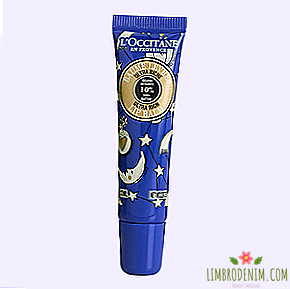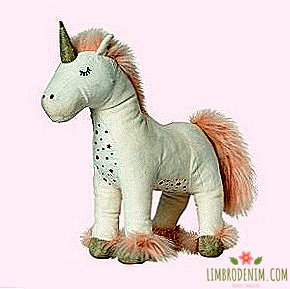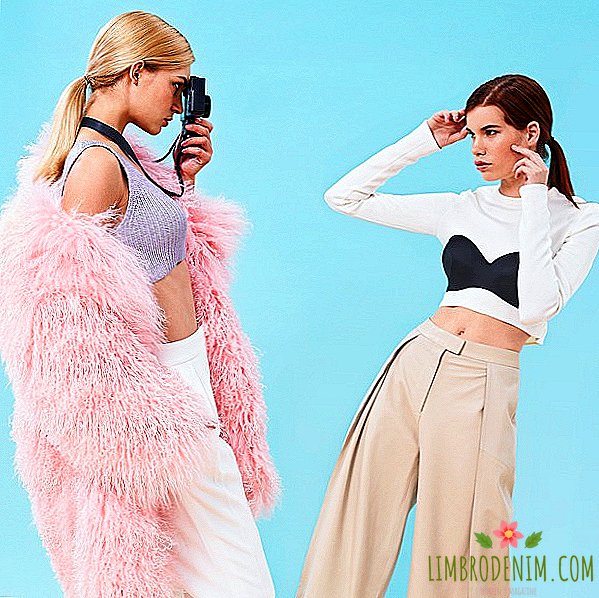Femvertizing fashion: What's wrong with feminist advertising
For almost a week now social networks have been discussing The Russian version of Reebok’s advertising campaign titled # Nykakiyeramki and its key slogan: “Move the needle of a man’s approval onto a man’s face”. Conceived as a feminist manifesto, advertising outraged users: someone scolded Reebok for aggression and disrespect towards men, others, on the contrary, it seemed that there was too little feminism in it - the original campaign is not about sex, but about the will of women. Mark Reebok predicted a collapse in sales - but in practice they only increased.
Advertising addressed to women, the so-called femming, in recent years has been one of the most popular brand promotion tools in the world - it is logical that they are also attached to this trend in Russia. We tell how advertising has started to treat women more respectfully - and what danger the fevertizing fashion holds at the same time.

alexander savina

From humiliation to empowerment
Three years ago, the "Cannes Lions" showed a video of the Badger & Winters advertising agency "#WomenNotObjects" ("Women are not things") with a hard parody of the sexist clichés adopted in the industry. One of the heroines was holding a poster with the slogan "I love to make blowjob sandwiches" (in an advertisement for Burger King, a woman opens her mouth to eat a giant sandwich), "I love it when a man smells like a vagina," said another heroine, referring to the advertisement of the male fragrance Tom Ford, where a bottle of perfume is placed between the legs of a naked woman. At the end there was a demand: "I am your mother, daughter, sister, colleague or boss. Don't talk to me like that."
For decades, the advertising market has really seen a solely naked body or sex object in a woman. With the growth of emancipation, such a condescending attitude was the reason not only for criticism, but also for the calculation of financial losses: it turned out that the market, seeking to increase income, offends or ignores the huge female audience, which makes purchases. According to Dhanushi Sivaggi, vice president of publishing business and marketing for XO Group Inc., a woman makes the decision on purchases in 70-80% of cases in couples. It is women who traditionally take care of children and elderly relatives, that is, they deal with economic issues - and this means that decisions often come from them, even if the man brings the main income or the entire family income.
The "masculine look" in the production of advertising is partly due to gender disproportion. According to the organization The 3% Movement, only 11% of creative directors in the field are women. When the human rights organization was just starting work, the share was even lower - 3%. Those who still manage to win a place in business often face discrimination (a quarter of women surveyed by The 3% Movement told about this). All this is reflected in the product: "When advertising is created through the" male "prism, the product is biased, only one point of view is visible," says Jean Bettany, executive creative director of the DDB agency.
Advertising "Beeline 4G" "Buffering"
This could not go on forever - advertisers finally wondered exactly how they talk to the audience. Back in 1995, Nike released the video "If You Let Me Play", where girls persuade parents to give them the opportunity to play sports, citing research data about its benefits - from a lower likelihood of breast cancer before reducing the number of unwanted pregnancies. "We appeal to parents, we want to convey to them that the sport for girls is no less important than for boys," the Nike spokeswoman Vizhir Corps said. "If you want your daughter to grow up physically strong and emotionally strong, sport will help you ".
But the beginning of the epoch of advertising, focused on women and respecting them, is still considered to be 2004, when Dove launched the famous campaign "Real Beauty". The brand began with an exhibition that featured the work of 67 women photographers, and since then advertising campaigns based on combating the standards of beauty and the insecurity of women in themselves have managed to become her calling card. For example, in 2006, the "Evolution" video was released, dedicated to how advertising campaigns are created (make-up and styling of a model, light and intensive retouching - all this is a little like "natural beauty") and how they affect our sense of self and perception. that can be considered beautiful. The advertisement received the Grand Prix of the Cannes Lions festival and became viral - as far as possible to consider viral what appeared before the wide distribution of social networks.
In 2013, the brand released another film experiment. Several women were asked to tell the artist, specializing in the compilation of identikits, what they look like - and he painted their portraits according to the description, without seeing them. Then the women were asked to tell what their partners looked like on the set - so that he would also draw a portrait according to the description. When comparing portraits, it turned out that women perceive themselves much more critically than others - and concentrate on "shortcomings", features that others do not consider "bad" and which are not paid attention to at all. "According to statistics, only 4% of women in the world are confident. We decided to do something that would help the rest 96%," said Anselmo Ramos, vice president and creative director of Ogilvy Brazil, who created the video.
Nike "If You Let Me Play" Advertising
Following Dove, the idea of empowerment was picked up by other brands. For example, in 2013 Pantene spoke about sexist labels that are attached to women: where a man is called "persistent", a woman will be considered "impudent". A year later, the movie "Not Sorry" came out, drawing attention to the fact that women used to apologize all the time - even in situations where their own borders are violated. Finally, in 2014, the Always #LikeAGirl, the already legendary Always video clip, came out on the Super Bowl, calling for a rethink of the phrase "like a girl": "Why does not running like a girl mean winning a race?"
In 2014, SheKnows media invented a separate term for such strategies - "femvirtising" ("femvertising", from "female" and "advertise"). This, of course, is not about any video, whose target audience is women, but about a certain type of advertising: the idea that women deserve more is central, and the product itself often has nothing to do with the plot and can only appear in the final. For example, advertising Pantene about the habit of apologizing at the end all the time calls for “Be strong and shine”, obviously, bearing in mind also the effect of hair products, and #LikeAGirl reflects on what it means to be a woman and a girl in general, but not about pads.
A year later, the phenomenon became so large-scale that SheKnows launched the annual Femversiting Awards - over the course of several years, about three hundred brands, brands and advertising agencies submitted applications for participation. From year to year, polls praise Always, Pantene, CoverGirl, Lane Bryant, Dove, Under Armor and P & G. The creators of the award claim that femvorting works: according to 2014, half of the 628 women interviewed by them said they bought the brand’s products because they like the way women are shown in its advertising. Advertising that respectfully appeals to women and encourages them to feel stronger and bolder is often beneficial for the brand itself. The most vivid examples here are Dove and Nike: in 2014, the revenue of the first grew from 2.5 to 4 billion dollars, and the quarterly income of the second rose by 15%, largely because the brand specifically appeals to the female audience. Even Russian advertising Reebok, which was perceived ambiguously, raised the brand of sales: Ozon online store reported that Reebok bought goods 20% more from February 8 to 10, and Lamoda retailer announced an increase in demand for sports goods in general, including Reebok increased the most - by 57%.

Feminism for export
The more popular feminist advertising becomes, the better its weaknesses are visible - now both feminists and advertising specialists criticize the “sale of empowerment”, and there are many reasons for that. The long-term attitude of corporations offering goods and services to a female audience is difficult to consider something pleasant: for years advertising positioning of products for women was based on manipulating fears, appeals to buy something to please men, and promises to get rid of the problems that the advertisers themselves invented (a vivid example is the whole industry for the fight against cellulite in the beauty industry).
It is not hard to guess that brand new popularity of feminism is extremely unprofitable: they just need to adapt to the actual public demand in order to stay afloat in a free market. Strategies for using the topic of equality require ingenuity: for example, even before the Internet era, cigarettes turned into a symbol of emancipation.
The creator of Bitch Media, Andy Zaisler, in her book “We Were Feminists Once: From the Riot Grrrl to CoverGirl ©,“ The Movement ”recalled that if the standard scheme for attracting women to shopping was to save a potential customer from a sense of insecurity, which Previously created by the brands themselves, consumer goods for the "new woman" with the emergence of the women's movement were presented by advertising as the path to autonomy.
Advertising Dove "Evolution"
The main criticism of "female" marketing is that it simplifies and devalues the ideas of the women's movement: on the one hand, pop feminism contributes to the widespread "equality" principle, on the other hand, it inevitably cuts the agenda to a list of items that will not irritate and frighten a wide audience. Is there a word of truth in Dior’s flirtatious slogan “We Should All Be Feminists” or is it a commercial lure replicated by pop stars? If the inscription "Feminist" on t-shirts sells well, how can we escape from the tragedy at a garment factory in Bangladesh, where did they come from? How relevant is the Middle Eastern girl in the hijab, dissecting on a skateboard in the Nike video, if in the region for which advertising is made, year after year, the level of gender-based violence is fixed? What is the "feminist" advertising of sports brands, if their ambassadors do not play sports, and real sportswomen often remain behind the casting board?
Marketer Katie Martell does not get tired of repeating that "good marketing is based on truth." And offers to test campaigns for the simulation of performances for women's rights. Ask the brand eight simple questions, says the marketer: for example, "Are there women in the company's management?" or "Does the company follow the principle of inclusion when hiring employees?". Brands are obliged to share the values that they designate advertising slogans, in their own practice, says Martell - otherwise, everything will turn out to be "an illusion of progress."
Opponents of femvertizing, by the way, like to remind brands about how they behaved before the “fashion for equality”. Not so long ago, the Gillette advertising campaign caused a wave of indignation - a series of scenes about the inadmissibility of bullying, harassment, and aggressive masculinity were performed just in the femvertising genre. Companies put on the look that it was she who for many years brought up the same "machoism" in a man for the sale of shaving foam, and demanded perfectly smooth legs from women in order to promote Gillette Venus.
Always #LikeAGirl advertising
Moreover, critics say, the brands manage to flirt with the female agenda with one hand, and with the other to promote the "canons of beauty". Is it permissible to urge women to apologize less often in the memorable Pantene video, while continuing to sell them all the same means for chasing the perfect appearance? Is it worth proud of the success of the Unilever brand, which masterfully integrated the ideas of body positive into advertising, if only 2% of the holding’s promotional materials (more than a dozen brands are included in it - among them Ahe, Sunsilk, Timotei and others) show women not through the prism of sexist convictions?
All these questions are fully justified. The relationships of brands and customers are still not without hypocrisy, there are many ethical claims to corporations and industries, and the facilitated, mainstream conversation about women's rights has already received the ironic name "feel-good feminism" ("positive feminism"). But do we want the slogans on the T-shirts to disappear altogether, while the advertising continues to reproduce harmful stereotypes, only so that it is not accused of ersatz feminism? Should we deny that pop culture in the case of ideas of equality turns out to be a mouthpiece, and celebrities and representatives of brands are supporters of the agenda? In the coming year, women's rights are certainly at the peak of popularity - and this demand provides ample opportunities for dialogue.
Photo: Dove





